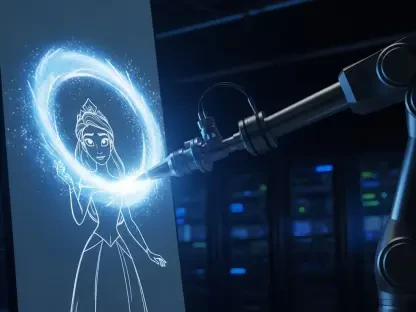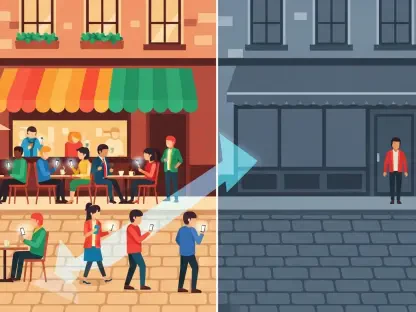In an era where artificial intelligence continues to reshape industries, a new contender, CraftStory, has emerged with a bold mission to transform video generation technology and take on titans like OpenAI and Google. Founded by Victor Erukhimov, a pivotal figure in the development of OpenCV—the globally recognized open-source computer vision library—this startup is drawing attention with its innovative approach. With just $2 million in funding, a fraction of what larger competitors wield, CraftStory introduces Model 2.0, a system designed to create long-form, human-centric videos up to five minutes in length. This capability starkly contrasts with the short clips produced by rival tools, positioning the company as a potential disruptor in a competitive landscape. As businesses increasingly demand high-quality, extended video content for training and marketing, CraftStory’s entrance into the market raises intriguing questions about whether a smaller player with focused expertise can outpace industry giants through sheer innovation and strategic vision.
Revolutionizing Video Generation with Advanced Tech
CraftStory’s flagship product, Model 2.0, represents a significant leap forward in AI-driven video creation, primarily through its use of a parallelized diffusion architecture. Unlike conventional sequential processing methods that often accumulate errors over time, this technology processes multiple video segments simultaneously with bidirectional constraints. The outcome is a coherent five-minute video, a duration that eclipses the limits of competitors like OpenAI’s Sora 2, which maxes out at 25 seconds. This breakthrough addresses a critical barrier in the industry, where longer content is essential for practical applications. By ensuring temporal consistency across extended clips, CraftStory offers a solution that could redefine standards for AI-generated media, especially in sectors requiring detailed visual narratives.
Beyond its architectural innovation, Model 2.0 incorporates a video-to-video framework that enhances realism and usability. Users can upload a static image alongside a “driving video” capturing a person’s movements, which the system then animates with remarkable precision. Features such as lip-sync and gesture alignment contribute to lifelike results, while the ability to generate 30-second low-resolution clips in roughly 15 minutes showcases efficiency. Upcoming enhancements, including text-to-video functionality and moving-camera support, signal CraftStory’s ambition to broaden its technological scope. This combination of current capabilities and future potential positions the startup as a forward-thinking player in a rapidly evolving field, challenging the status quo set by more established names.
Prioritizing Data Quality for Superior Output
In a departure from the industry trend of amassing vast datasets from the web, CraftStory places a premium on the quality of its training data over sheer volume. The company collaborates with professional studios to record proprietary footage using high-frame-rate cameras, capturing intricate details even in fast-paced scenes. This meticulous approach avoids common issues like motion blur, often seen in videos sourced from less controlled environments. By focusing on crisp, curated content, CraftStory ensures that its AI models produce visually superior outputs, setting a benchmark for clarity and realism that competitors struggle to match without significant resource investment.
Additionally, CraftStory’s commitment to ethical practices in data collection further distinguishes its methodology. Professional actors are employed to create driving videos, and they receive a share of the revenue when their motion data is utilized in projects. This revenue-sharing model not only fosters fairness but also incentivizes high-quality performances that enhance the training process. By demonstrating that impactful results can stem from smarter data choices rather than endless computational power, CraftStory challenges the prevailing notion that bigger budgets equate to better outcomes. This strategic focus on quality could inspire a shift in how AI video generation approaches data, emphasizing precision over mass accumulation.
Targeting Enterprise Needs with Strategic Focus
CraftStory has deliberately chosen to concentrate on enterprise applications rather than the broader consumer market, identifying a niche with substantial demand for extended video content. Aimed at software companies and creative agencies, the startup caters to needs for training materials, product demonstrations, and customer education videos—areas where short AI-generated clips often fall short. The ability to produce consistent five-minute videos fills a glaring gap, offering businesses a tool to create impactful content that aligns with professional standards. This targeted approach underscores CraftStory’s understanding of specific market pain points, positioning it as a valuable partner for corporate clients seeking efficient solutions.
The economic benefits of CraftStory’s offerings add another layer of appeal to its business-to-business strategy. By generating polished videos in mere minutes, the technology slashes costs that could otherwise reach tens of thousands of dollars and span months of production time. Collaborations with creative agencies amplify this value, streamlining workflows and reducing the need for expensive, multi-day shoots. Such cost and time efficiencies make CraftStory an attractive option for enterprises looking to optimize resources without compromising on quality. As more businesses recognize the practicality of longer AI-generated content, the startup’s focused model could pave the way for widespread adoption in corporate settings, challenging larger competitors to rethink their own market approaches.
Navigating a Giant-Dominated Market as an Underdog
Despite entering a field dominated by tech behemoths, CraftStory’s modest $2 million in funding—spearheaded by investor Andrew Filev—belies its ambitious goals. In stark contrast to OpenAI’s recent $6 billion capital infusion, this startup operates on a lean budget, yet it refuses to see financial disparity as a barrier. The leadership, including founder Victor Erukhimov, champions the strength of a compact, expert team over the sprawling resources of larger rivals. This perspective highlights a belief that niche innovation and specialized knowledge can create significant impact, even against well-funded giants, offering a fresh narrative in an industry often defined by monetary might.
The underdog status of CraftStory adds a compelling dimension to its market presence, emphasizing agility and precision over scale. By honing in on enterprise-specific needs and leveraging Erukhimov’s deep expertise in computer vision, the company seeks to carve out a distinct space amidst fierce competition. This strategic positioning suggests that success in AI video generation may not solely depend on vast investments but on identifying and addressing underserved segments with tailored solutions. If CraftStory can maintain rapid innovation and capture early enterprise clients, it could establish a foothold that challenges the dominance of bigger players, proving that determination and focus can rival expansive budgets in shaping industry trends.
Shaping the Future of AI Video Innovation
Reflecting on CraftStory’s entry into the AI video generation arena, it’s evident that the startup has made a striking impression with its ability to produce extended, high-quality content through Model 2.0. Its parallelized diffusion architecture and emphasis on curated data have delivered results that outstrip the short-clip limitations of competitors, setting a new precedent for what AI video tools can achieve. The enterprise-focused strategy tapped into a vital need for cost-effective, professional content, resonating with businesses hungry for practical solutions.
Looking ahead, the next steps for CraftStory involve scaling access to Model 2.0 through early adoption programs and refining features like text-to-video capabilities to broaden its utility. Continued partnerships with creative agencies and software firms will be essential to solidify its market position. As the industry watches this small yet determined player, the broader implication is clear: specialized innovation can disrupt even the most entrenched markets. Stakeholders should monitor how CraftStory’s journey unfolds, as its progress could inspire a wave of niche-focused advancements, reshaping expectations for AI-driven video technology in the years to come.









